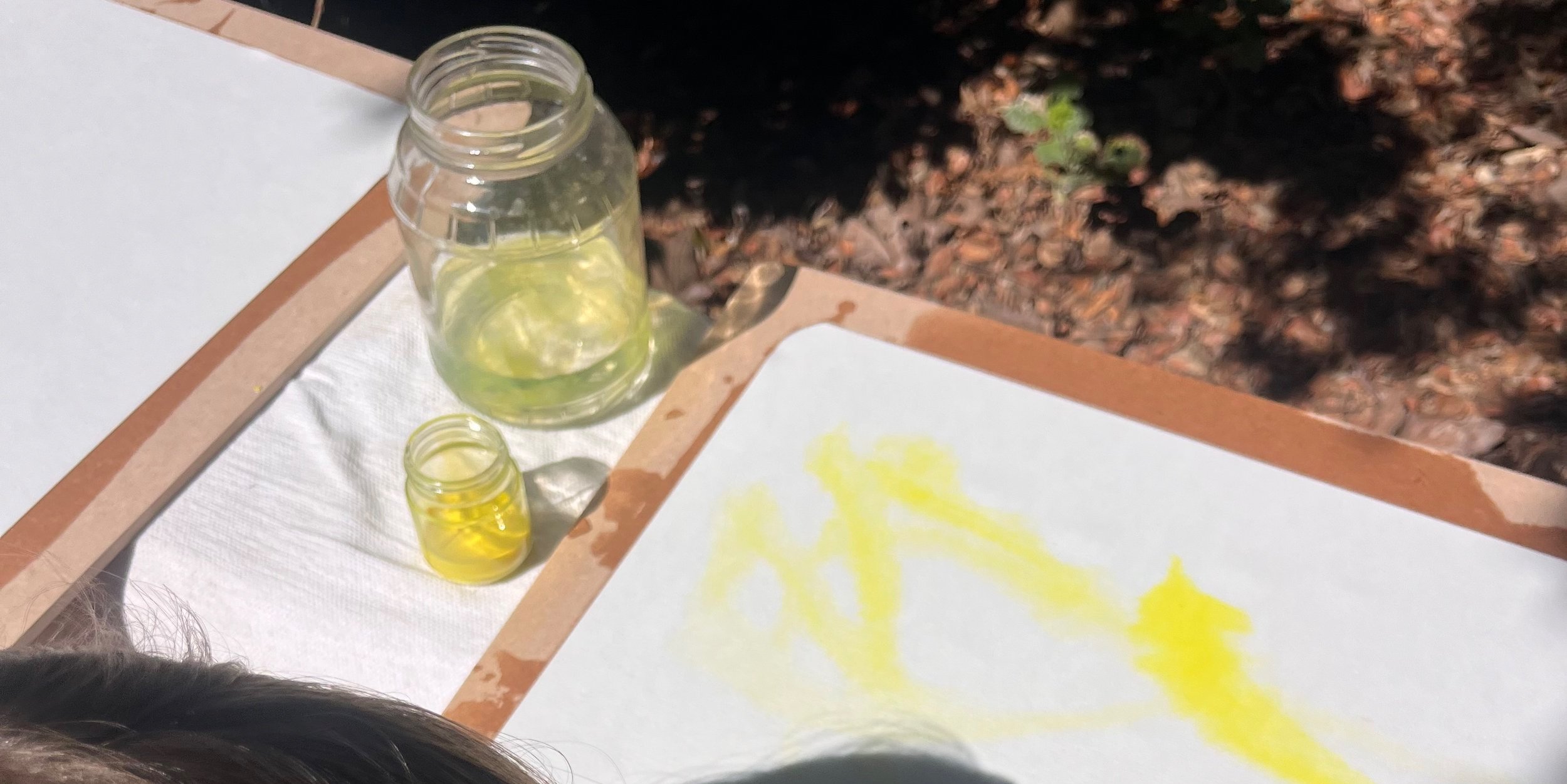
Lower School (Grades 1 - 4)
Grades 1-4 lay a foundation for a lifelong love of learning through rich, imaginative, and developmentally appropriate curriculum. During these years, core curriculum like language arts, science, and math are learned through story, art, sculpture, handwork, games, and movement, and intentional hands-on activities that engage the whole child—head, heart, and hands.
Each grade’s curriculum builds on the previous. First grade introduces letters and numbers through fairy tales; second grade explores legends in fables, third grade focuses on practical life skills through farming, shelter, and measurement blocks, and fourth grade dives into Norse mythology, local geography, and applicable fractions math. With the understanding of the entire first through eighth-grade educational journey, the same teacher typically stays with the class through these years, fostering a deep understanding of each child as an individual and a strong sense of community amongst the students.
We look forward to introducing Grade 1 to students enrolling for the 2026-2027 school year. A new grade will be added each year as our inaugural class moves upward until Grade 8.
Grade 1 Curriculum
-
Language arts are taught creatively through drawings and paintings, helping to form letters. Each letter is introduced through artistic activities, allowing children to connect emotionally with language; vowels, in particular, are linked to the child's feelings. This imaginative approach helps children see language as more than just words on a page—it becomes a living expression.
-
Social studies focuses on human life through fairy tales that highlight universal experiences, values, and struggles. These stories teach lessons of courage, wisdom, and compassion while also introducing different cultures and histories. The goal is to nurture both intellectual and moral understanding.
-
Geography is taught through direct experience with nature. Rather than just studying maps, students explore the land and its features, fostering a deep connection with the Earth and its cycles. The beauty and harmony of the natural world are emphasized.
-
Science is experienced through storytelling, where children learn about nature through engaging narratives. The curriculum encourages curiosity about the natural world and includes exercises that stimulate all twelve senses—not just the traditional five. This approach helps children develop a deep, embodied understanding of science.
-
Math is introduced through counting, rhythm, musing, and patterns, building an intuitive understanding of numbers. The focus is on mental arithmetic and the natural flow of mathematics, encouraging children to approach math with enthusiasm and imagination.
-
Drawing helps children develop fine motor skills and an understanding of form and color. Starting with simple lines, curves, and patterns, children use block crayons to create expressive artwork, building the foundation for later activities like writing letters.
-
Wet painting with watercolors helps children express emotions through color and form rather than focusing on realistic pictures. This encourages imagination and a connection between their feelings and artistic expression.
-
Handwork, such as knitting, strengthens fine motor skills and concentration. These activities foster creativity and introduce basic math concepts through counting and rhythm. Handwork also engages the will and encourages patience and mindfulness.
-
Sculptural arts, often using beeswax, allows children to create stories from fairy tales. The soft material encourages creativity and spatial awareness through tactile learning, connecting children to personal and cultural narratives through sculpture and modeling.
-
Music is integrated into daily life, with children learning to play the pentatonic recorder and singing songs that connect them to nature's rhythms and seasons. Music fosters emotional, rhythmic, and listening skills, turning music into an embodied experience.
-
Circle and singing games promote physical coordination and social connection. These activities help children learn balance and synchronize their movements on both the left and right sides of the body while also teaching cooperation and empathy in a fun and creative way.
Class Teacher
Each class has a primary teacher who may accompany students through elementary years, building deep relationships. Subject specialists teach world languages, music, movement, and arts.
Main Lesson
Intensive 3-4 week studies of math, language arts, science, history, or geography. Subjects come alive through artistic presentations and storytelling. Students create handwritten, illustrated lesson books.
Technology & Media
Guidelines support thoughtful technology use based on child development research. Screen-free childhood through age seven is encouraged, with limited screen time in grades 1-6.
Begin the Application Process
We are now enrolling our inaugural first-grade class for the 2026-2027 school year. Start the application process below.
